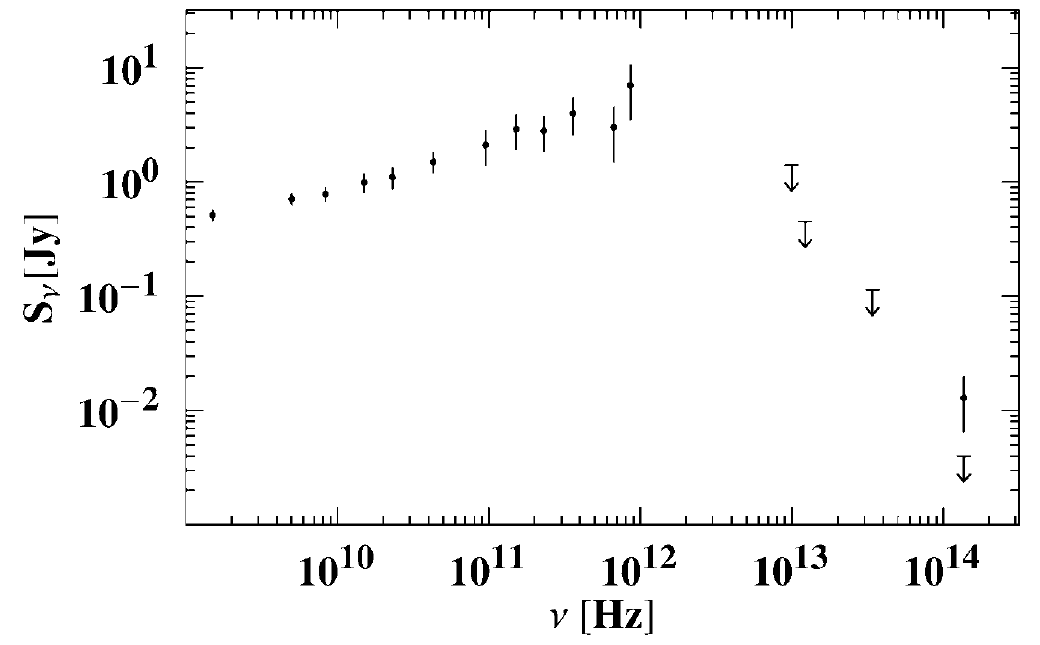
تاريخ الفيزياء

علماء الفيزياء


الفيزياء الكلاسيكية

الميكانيك

الديناميكا الحرارية


الكهربائية والمغناطيسية

الكهربائية

المغناطيسية

الكهرومغناطيسية


علم البصريات

تاريخ علم البصريات

الضوء

مواضيع عامة في علم البصريات

الصوت


الفيزياء الحديثة


النظرية النسبية

النظرية النسبية الخاصة

النظرية النسبية العامة

مواضيع عامة في النظرية النسبية

ميكانيكا الكم

الفيزياء الذرية

الفيزياء الجزيئية


الفيزياء النووية

مواضيع عامة في الفيزياء النووية

النشاط الاشعاعي


فيزياء الحالة الصلبة

الموصلات

أشباه الموصلات

العوازل

مواضيع عامة في الفيزياء الصلبة

فيزياء الجوامد


الليزر

أنواع الليزر

بعض تطبيقات الليزر

مواضيع عامة في الليزر


علم الفلك

تاريخ وعلماء علم الفلك

الثقوب السوداء


المجموعة الشمسية

الشمس

كوكب عطارد

كوكب الزهرة

كوكب الأرض

كوكب المريخ

كوكب المشتري

كوكب زحل

كوكب أورانوس

كوكب نبتون

كوكب بلوتو

القمر

كواكب ومواضيع اخرى

مواضيع عامة في علم الفلك

النجوم

البلازما

الألكترونيات

خواص المادة


الطاقة البديلة

الطاقة الشمسية

مواضيع عامة في الطاقة البديلة

المد والجزر

فيزياء الجسيمات


الفيزياء والعلوم الأخرى

الفيزياء الكيميائية

الفيزياء الرياضية

الفيزياء الحيوية

الفيزياء العامة


مواضيع عامة في الفيزياء

تجارب فيزيائية

مصطلحات وتعاريف فيزيائية

وحدات القياس الفيزيائية

طرائف الفيزياء

مواضيع اخرى
Radio spectrum of Sgr A*
المؤلف:
Heino Falcke and Friedrich W Hehl
المصدر:
THE GALACTIC BLACK HOLE Lectures on General Relativity and Astrophysics
الجزء والصفحة:
p 319
12-2-2017
1814
Radio spectrum of Sgr A*
A major input for modeling the nature of the central black hole candidate of our Galaxy is the emission spectrum. Typical luminous black holes, e.g. those in quasars, emit over a broad range in frequencies. In contrast, for Sgr A* only radio emission was reliably detected over many years, with the late addition of X-ray emission. One reason for this dimness is certainly the low accretion rate and quite plausibly the presence of a radiatively deficient accretion flow.
At frequencies below 1 GHz the spectrum is essentially undetermined. First of all, the scattering size of Sgr A* becomes larger than 1 arcsecond and the source starts to blend with its surroundings. Second, the Sgr A complex becomes optically thick at low frequencies (Pedlar et al 1989) and Sgr A* may be obscured. It is also possible, but less likely, that the claimed low-frequency turnover in the spectrum (Davies et al 1976) has an intrinsic nature.
At higher frequencies the radio spectrum of Sgr A* has been measured with great accuracy in various campaigns up to the THz regime (e.g. Wright and Backer 1993, Zylka et al 1995, Serabyn et al 1997, Falcke et al 1998). Since the source is variable, it is useful to consider either simultaneous or time averaged spectra. Such an average spectrum is shown in figure 1.1compiled by Melia and Falcke (2001). The overall radio spectrum is slightly inverted, i.e. it has a positive spectral index (α  0.2, Sν ∝ να) in the GHz regime. The average radio flux density is around 1 Jy. At the highest radio frequency (> 100 GHz), the spectrum seems to become even more inverted until it abruptly cuts off somewhere in the far-infrared. This upturn and subsequent cut off has been interpreted as an effect of the finite size of the central object with a size scale as expected for a 3 × 106 Mּ black hole (e.g. Falcke and Biermann 1994 and later). The up-turn in the spectrum at sub mm wavelengths is often referred to as the ‘sub mm bump’.
0.2, Sν ∝ να) in the GHz regime. The average radio flux density is around 1 Jy. At the highest radio frequency (> 100 GHz), the spectrum seems to become even more inverted until it abruptly cuts off somewhere in the far-infrared. This upturn and subsequent cut off has been interpreted as an effect of the finite size of the central object with a size scale as expected for a 3 × 106 Mּ black hole (e.g. Falcke and Biermann 1994 and later). The up-turn in the spectrum at sub mm wavelengths is often referred to as the ‘sub mm bump’.

Figure 1.1. Time-averaged spectrum flux density versus frequency of Sgr A* from radio to the near-infrared as compiled by Melia and Falcke (2001). The error bars in the radio regime indicate variability (one standard deviation).
 الاكثر قراءة في الثقوب السوداء
الاكثر قراءة في الثقوب السوداء
 اخر الاخبار
اخر الاخبار
اخبار العتبة العباسية المقدسة

الآخبار الصحية















 قسم الشؤون الفكرية يصدر كتاباً يوثق تاريخ السدانة في العتبة العباسية المقدسة
قسم الشؤون الفكرية يصدر كتاباً يوثق تاريخ السدانة في العتبة العباسية المقدسة "المهمة".. إصدار قصصي يوثّق القصص الفائزة في مسابقة فتوى الدفاع المقدسة للقصة القصيرة
"المهمة".. إصدار قصصي يوثّق القصص الفائزة في مسابقة فتوى الدفاع المقدسة للقصة القصيرة (نوافذ).. إصدار أدبي يوثق القصص الفائزة في مسابقة الإمام العسكري (عليه السلام)
(نوافذ).. إصدار أدبي يوثق القصص الفائزة في مسابقة الإمام العسكري (عليه السلام)


















